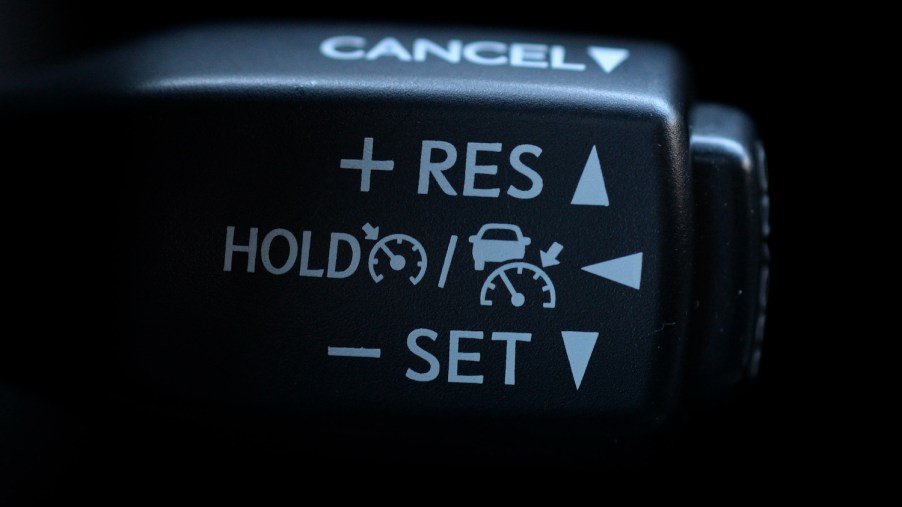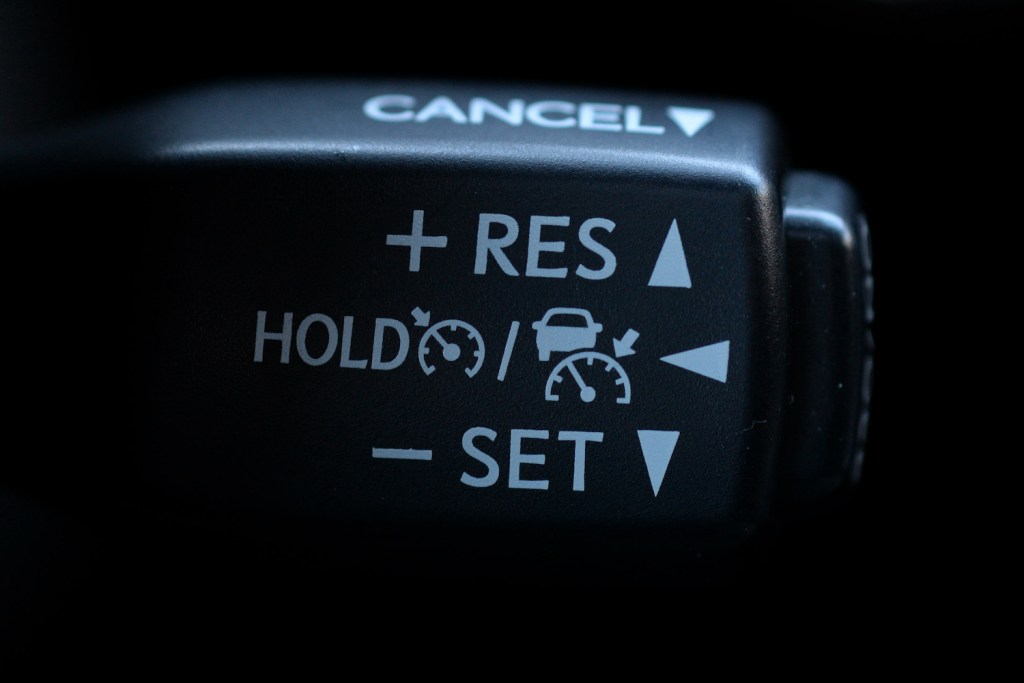
Adaptive Cruise Control: How Does It Work and Do You Actually Need It?
There are safety features that, once upon a time, were only available on higher-end trim levels and in more expensive luxury models. Take, for instance, adaptive cruise control. While it was once considered a more high-end safety feature, these days, it’s one that can be found on several new models, affordable cars included. But how does adaptive cruise control work and do you really need it? Let’s find out.
What is adaptive cruise control and how does it work?

First things first, let’s talk about what cruise control is. Odds are, you already know. But for the unfamiliar, cruise control allows you to set your car to a determined speed. It’s actually pretty simple. Once you reach the speed you want, you can turn on cruise control, and you’re good to go.
But these days? Automakers are taking it one step further with adaptive cruise control. As U.S. News & World Report explains, the difference between the two is that adaptive cruise control uses radar or other systems to find out how close other cars are.
The system then uses that information to automatically adjust the speed of the car. Some adaptive cruise control systems even include automatic emergency braking to protect you from collisions. Neat, right?
According to U.S. News, the safety tech actually dates back to 1992. When, at the time, Mitsubishi offered a Lidar-based detection system on a vehicle it sold only in Japan. Unlike today’s systems, however, the automaker’s Lidar-based detection system only issued a warning to the driver.
When should you use it?
Now, Motor Trend reports that adaptive cruise control is best suited for long commutes. “Letting the car operate the accelerator and brakes for most of your drive home from work can relieve a lot of the stress associated with driving,” Motor Trend explained.
But is commuting the only time you should use it? As it turns out, not really. While it’s certainly useful for long commutes, this sought-after safety feature can also come in handy on long road trips. In fact, Car Buzz reports that it’s one of the best car features for embarking on such a trip.
What cars come with adaptive cruise control?
These days, there are several affordable cars with adaptive cruise control. Among the cheapest cars with this safety feature is the 2021 Nissan Versa SR, which unlike the base model Versa starts at $18,390. The 2021 Toyota Corolla, on the other hand, comes standard with it and boasts a base price of $20,025.
Lots of other vehicles offer it too, SUVs included. In fact, according to TrueCar, the best SUVs with adaptive cruise control include popular models like the 2021 Ford Mustang Mach-E ($42,895), the 2021 Kia Telluride ($32,190), and the 2021 Toyota Highlander ($34,910).
Do you need adaptive cruise control?
There’s no denying that it’s a useful feature. But do you need it? That’s really a personal decision. But when it comes down to it? If you find yourself stuck with a long commute or plan on hitting the open road for a road trip any time soon, chances are you’ll enjoy having a car with adaptive cruise control.



